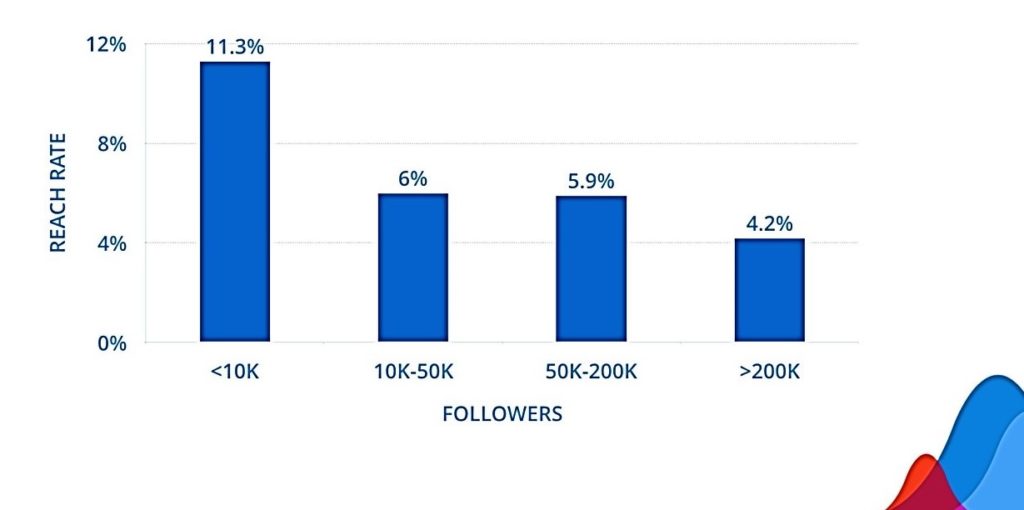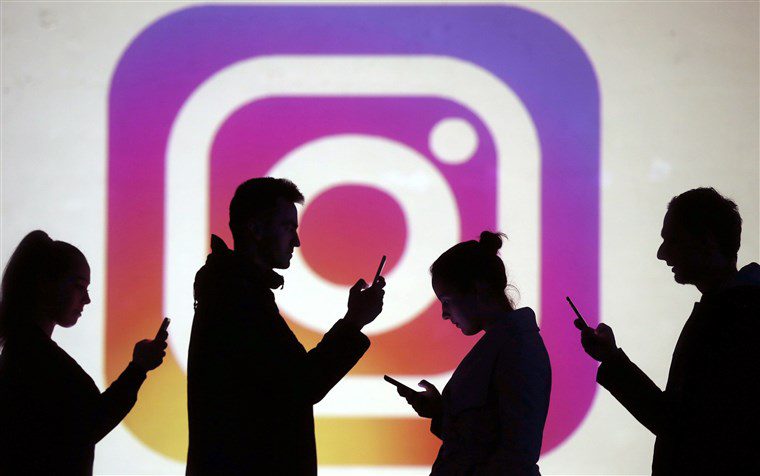Should your business depend upon the extent to which customers recognize your brand on Instagram, you will have to fully understand the terms on your analytics dashboard and you might have failed to do so in some cases, two words in particular, “reach” and “impressions”. So what makes these two terms so critical to your Instagram business account? And why you need to be able to tell the difference between “reach” and “impressions”?

What Is “Reach” on Instagram?
Reach is the total number of unique people who saw your ads or contents at least once. For example, if your post is seen by 500 people then the reach count will be 500 too.
Keep in mind that Instagram reach even takes account of a single glance at a post so it does not matter whether the viewers liked, saved, shared or even saw the post properly.

What Is “Impressions” on Instagram?
The Instagram impressions are the number of times that your ads or contents were displayed. Now before you get puzzled, it is important to remember they are, in fact, appreciably different from reach, however, you are not to blame if your immediate thought is that they are pretty much the same.
Further to that, impressions place the focus on the total number of times that people saw your content, not the total number of people who saw it. This means that, if your impressions are higher than your reach, people have seen your post more than once.

How to Track Reach and Impressions on Instagram?
In order to gain access to Instagram “insights”, you are required to follow these simple steps.
Step 1 – switch to a business profile or a creator account.
Step 2 – look at under your post and click “view insights”. You can also have access to these metrics when you share a story by swiping up the story and checking your performance.
Step 3 – distinguish each analytic data from one another to develop a promising business strategy. For example, impressions are categorized according to people to whom your post was displayed by hashtags, profile and other sources.
Step 4 – if you would like to check your general performance, you can also access to your weekly reach and impressions through the activity tab in your Instagram sights.

The audience section will provide you with the bigger picture as well. Knowing which country or city most of your target audience is, and what days or hours they are most active can easily broaden your horizons.
However much you learn more about your target audience is never too much. Be innovative to impress less active audience by getting to know them better.
Why Track Reach and Impressions on Instagram?
Both of these metrics go to engagement rate’s aid. No matter what your social campaign is, they all have a goal in common in order to expand their success, and it is nothing but to increase their engagement rate. Here are some reasons why you need to track reach and impressions on Instagram.
- Find your effective frequency
Effective frequency refers to the extent that your ad gets exposure, and tracking the ratio of impressions to the overall reach will be an effective technique to do so. This is called “average impressions per users”.
Impressions are almost always higher than reach since at least a person is highly likely to see your post more than once. Experts believe that impressions should be at least 3 times more than reach to claim that you have reached a decent effective frequency while many believe that 7 times more is arguably the best number.
However, do not worry about the numbers since you can track your lucky number by finding your most effective posts and calculate it by yourself.
- Prevent bombarding ads
When you get the hang of what your effective frequency is, you will not only resolve lack of engagement, you also avoid ad fatigue because you never want to be too informative and annoyingly display your contents until you reach a point that your audience easily ignore you.
In this case you need to increase reach, without letting impressions go up greatly and put further distance between itself and reach.
- Rethink your strategy
If you already have a high reach, it means you have been successful to make your way to a considerable number of people, while this will warn you whether you need to consider another strategy. How? The answer is not beyond the reach.
What if many people see your ads, but do not have acceptable amount of conversation about it? Well, that means you either need to change your contents or the approach to presenting them.

Distinguish Between Facts and Fictions about Instagram Algorithm
Recently, Instagram has introduced an algorithm that chooses which photos and videos should rank higher in users’ feed, and if you want to increase your reach, you need learn about this algorithm.
However, it is not an easy task to know how this works while Instagram keeps the rules of its algorithm a secret.
The first thing to keep in mind is staying away from the myths that is created by all the secrecy. Here are some facts revealed by Instagram that eliminates popular fictions which do not come close to the truth at all.
- Instagram does not favor photos over videos or the other way round.
- Business profiles or creator accounts do not get higher reach in comparison with a personal type.
- Do not buy Instagram likes.
The question is how to use Instagram algorithm to our advantage. If you are trying to increase your reach pay attention to the following features:
- Timing
This very much depends on your target audience and their demographics. Figure out the best time to post so that they are the newer posts for your target audience which will appear first in their feed. - Interest
Be innovative to generate interest in your target audience. Encourage more and more interactions and give them a reason to respond to your call-to-action buttons. Remember that this algorithm analyses if you develop a meaningful interaction. - Use the right hashtags
Monitor Instagram and look for trending hashtags. The more attention you draw to yourself, the higher organic reach on Instagram you will get. - Value the social aspect of Instagram
Try to answer questions asked by your followers as soon as possible, and appreciate them interacting with your posts. Sometimes, you may also need to follow others or interact with their posts or stories especially the ones related to your business. - Do not underestimate the impacts of Instagram stories
They are above news feed, minimal and effective. You can share links, offers, engaging contents, behind-the-scene footage and go live in order to reach more audience. - Explore IGTV
Publish longer videos, exclusive offers and increase your brand awareness through your Instagram television.

Conclusion
Two key elements to analyze your performance are “reach” and “engagement”. Once you realize their difference, you can track each one separately or both together to implement, develop or evolve your business strategy. This will help you know your audience better and live up to their expectations.
So what are you waiting for? Start utilizing reach and impressions, gain a deeper insight into your performance and expand your business by predicting what your next step will be.










